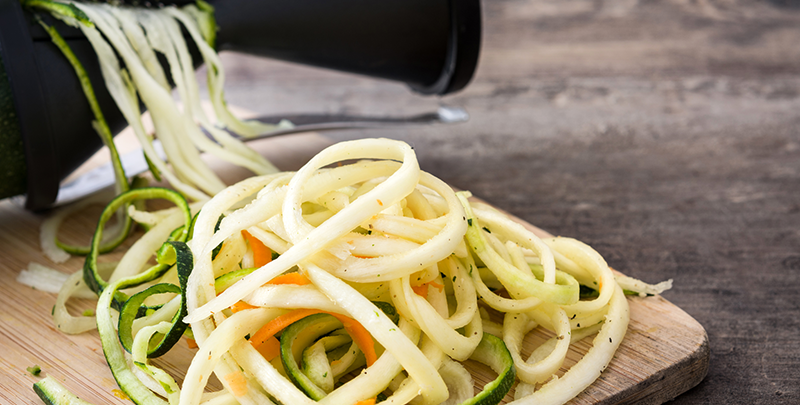Protein has several unique and highly sought after features, including:
- It is essential for muscle building
- It helps to satisfy and keep us feeling full
- It requires more energy to breakdown than fat or carbs
And while points two and three are extremely relevant in the nutrition world, the emphasis of today’s discussion is going to be all about point number one.
Here’s what I’m going to cover:
Part I – How Much Protein You Need
Part II –Where To Get It From
Part III – Putting It All Together
Let’s get to the good stuff!
Explore America's #1 Selling Weight Loss Supplements
Determining Your Protein Needs
Given all the conflicting information on the internet, it can be incredibly challenging for the average person to understand how much protein they need to reach their goals.
Of course, total protein intake is far from the only thing that matters in the nutrition world, but it absolutely matters.
Individual’s protein requirements scale up based on how active they are and the type of activity they are involved in.
The average sedentary person needs an absolute minimum of .8 grams of protein per day per kilogram of bodyweight, but they may choose to consume more to take advantage of proteins metabolic effects.
Active people, as per the most reputable recommendations, require between 1 – 2 grams of protein per kilogram of body weight where endurance-based individuals like runners may be on the higher end of the range and athletes involved more in the strength/power world on the higher end of that range.
I frequently hear from clients that they’ve been recommended to consume 1 gram of protein per lb of bodyweight, which is equivalent to 2.2 grams of protein per kilogram.
This number certainly would not apply to the average runner or endurance athlete, but it could make sense for a strength-focused individual especially when trying to maintain muscle mass during periods of caloric deficit or injury.
Also Read: Best Creatine for Women
Where, How To Get Your Protein
Now this is where it gets interesting. For people who are concerned with eating in the most balanced, nutrient-dense way possible there are two important considerations to be intimately aware of.
#1 More Is Not Always Better
Overemphasizing protein intake and striving for unnecessarily high numbers may cause you to displace other nutrient dense foods that contribute greatly to your health.
Examples of foods that have no to low amounts of protein but are extremely nutritious include all nuts and seeds, avocados, quinoa, brown rice, sweet potato and pretty much all fruits and vegetables.
#2 Diversity Is Key
Diversity in protein intake is fundamental for good health because each family of protein-containing foods offers unique benefits or characteristics often not found in the other.
Let’s find out what I mean
Fatty Fish – Fatty fish include salmon, sardines, herring, trout and mackerel. These foods are pretty much the only foods that contain large amounts of omega-3 and Vitamin D, without them it will be very hard to get enough of these elusive nutrients.
Legumes – Legumes are the family of foods including lentils, chickpeas, kidney beans, black beans and related foods. These foods are unique because they are the only protein source that also contains a large amount of fiber which makes them one of the most satiating foods in existence. They also contain meaningful amounts of nutrients people tend to fall short in like calcium, zinc, magnesium and potassium.
Red Meat – In addition to being well enjoyed, red meat contains above average amounts of highly absorbable iron and is a unique source of beneficial compounds like carnitine and creatine. Relying too heavily on red meat, however, could lead to excessive saturated fat intake – hence why variety is key.
Poultry, Seafood, White Fish – The major advantage of most poultry, seafood and white fish is that they are extremely lean and have a great protein to calorie ratio – making them strong choices for those trying to hit a high protein target with not many calories to work with.
Soy – Soy-based foods like tofu, tempeh, edamame and soy-milk contain high quality soy protein and a host of unique antioxidant compounds in the isoflavone family.
Eggs - Eggs are economical and well-enjoyed protein sources that contain small amounts of Vitamin D. The yolk is home to unique antioxidant compounds like lutein and does not need to be discarded, even if egg whites alone are leaner protein sources and may be useful in certain situations.
Low Fat Dairy - Particularly skim milk and 0% Greek yogurt, have the advantage of being lean protein delivery vehicles which are also incredibly high in calcium. Cow’s milk tends to be fortified with Vitamin D3 while yogurt is a unique dietary source of probiotics, adding to their unique nutritional value.
#3 Timing Matters, But It Isn’t Everything
Getting enough total daily protein from a range of sources is more important than finer details around the timing of your protein intake.
With that being said, sport scientists are generally in agreement that protein is best utilized when spread somewhat evenly throughout the day.
You’ll see what I mean in the next section though.
Putting It All Together
Alright, we finally made it – appreciate you sticking with me because we are about to get to the best part.
Putting it all together!
Let’s start by using a sample person who is a weight-training focused individual weighing 70 kilograms.
Friendly reminder that 1 kilogram = 2.2 lbs and thus 70 kilograms is 154 lbs.
Let’s say this individual reads today’s blog post and based on the guidance provided decides to aim for 2 grams of protein per kilogram of bodyweight.
Which means, their protein target is 140 grams per day.
They also want to spread their protein intake over three meals and a snack, with as much diversity in protein intake as possible.
Here’s what that could look like:
Demonstrating using protein-focused foods only.
Breakfast – 40 Grams
6 egg omelet OR 1 package of scrambled tofu (vegan egg alternative)
Lunch - 40 Grams
1 can of tuna or other fish ( ~170-180 grams)
Snack – 20 Grams
1 Cup Greek Yogurt
Dinner - 40 Grams
1 can of chickpeas OR 150 grams of chicken, fish, poultry or red meat ( or a combo!)
And there you have it folks.
A no-nonsense guide to determining and achieving your daily protein goals while respecting the importance of diversity in protein intake and the scientific value of spreading protein intake throughout the day.
Hope it helped!
Andy De Santis RD MPH
Blogs You'll Love:
- How to Lose Weight the Fastest?
Our Most Read Content:
- Frequently Asked Hzydroxycut Q&A
- Is Hydroxycut Effective?
- Is Hydroxycut Safe?
- Does Hydroxycut Work?
- Wondering About Hydroxycut Side Effects?
Shop America's Best Selling Weight Loss Supplements



